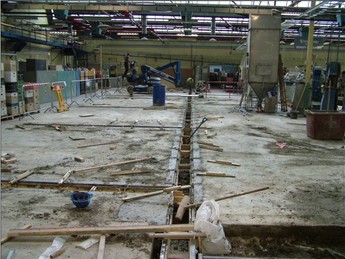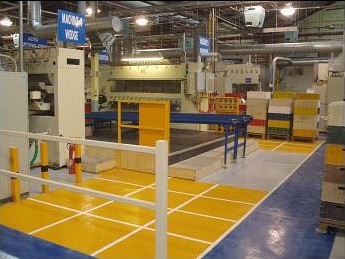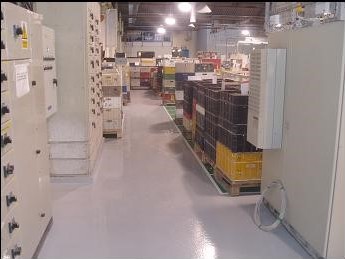You have gone to great length to purchase the right machinery, you have a preventative maintenance plan in place, your operators are motivated and well trained, you are even maintaining a 5S culture complete with performance charts and KPIs, and you still cannot get product out of the door inside an acceptable lead time. What is going on?
Update your SatNav
You know the sinking feeling when you are on your way to an important meeting and your SatNav gets confused because its map is too old and does not recognise a new road layout. You turn up at the last minute or even worse – late.
Similarly, if your customers suddenly require different products or service levels or if you get new customers you may find that the new products and changed requirements struggle to navigate your existing factory layout. You deliver just in the nick of time or late. – Time to update your factory map.
When lead time becomes an issue a natural reaction is to look into faster machines, increase the work rate and perhaps hire more staff. These are short-term measures which will work for a short while.
Focus on your customers
A persistent lead time issue is likely to require a good hard look at your factory’s ability to efficiently and cost effectively deliver to current customer demands.
Customers have a habit of frequently wanting something different, which will always be a challenge for any manufacturer. Therefore, you need to review your factory layout regularly to ensure that it is optimised for the current market conditions. The cost and disruption involved in changing things around are tempting reasons not to do so. However, staying level with the market demands could be the reason you keep your customers and attract new ones.
Variety, complexity, volume
When you look at your customer order profiles, you will notice differences and similarities in their demands for variety, complexity and volume. So if your factory is set up to cater for low variety/high volume only and you also have customers who require high variety, high complexity, but low volume, for example, you will run into trouble. Changeovers will be a constant headache as volume and variety compete for attention. Planning will be complicated or near impossible and the casualties will be lead time and reliability. Once this happens, you can be sure that your production costs are too high as well, reducing your margins or making your prices uncompetitive.
As different customer demands require different factory layouts you may find that you need a mixture of e.g. cells and individual machines dedicated for specific purposes.
Before – during – after




Six golden rules
Whether you have a batch production, one piece flow, cells or lines six golden rules apply to any factory layout.
- Health and Safety
We have a legal obligation to design our workplace in a way that complies with a variety of H&S regulations. Anything from fire exits to an ergonomically correct working height and proper lighting levels. H&S has become the butt of many a joke for going over the top, so it is important to maintain a common sense approach towards the aspects that are not laid down by law.
- Length, direction, and clarity of flow
As a rule of thumb production and materials should follow the shortest and most direct route, from production start to the outbound loading door and from stores to machines. Signage and clearly identified routes will help cut down wasted travel time and distances by staff and materials. Flow also applies to information and the same principles apply. Shortest and most direct route, using the most appropriate methods.
- Accessibility
All machines, equipment and plant must be easily accessible for maintenance, cleaning, changeovers etc. Whilst it is important to fully utilise space, placing machines too close together or in each other’s way will add to the downtime for example for maintenance or breakdowns. Accessibility is also part of the H&S considerations.
- Best use of space
A Lean principle is to minimise the production footprint or to fit as much in as practically possible. Changing the factory layout can potentially work towards that goal. Very often production and storage areas have enough ceiling height e.g. to build a mezzanine or install racking to replace floor storage.
- Management and communication
Supervision and communication need to be considered in any layout. Communication equipment (notice and performance boards etc.) and supervisor work stations must be accessible and close to where the action is.
- Long-term flexibility
Layouts need to be challenged and potentially changed periodically. Any design should be made with future requirements in mind, e.g. expansion or perhaps contraction. Whilst you cannot foresee everything, it is good practice to do a bit of “what-if-ing” before you bolt down a conveyor or some other equipment that has the potential to limit the future use of your space.
When you follow those golden rules, your SatNav will always have the latest and best map of your factory. Your lead times will be reduced as your production is now flowing along the shortest and most direct route possible.
Book an assessment
When you know your factory and shop floor inside out, you get used to the way it is and things can hide in plain sight.
Why not book a WBS Group manufacturing assessment with one of our Supply Chain Specialist Consultants to sense check your own thoughts and ideas and to get fresh and independent input.
As a first step, contact our WBS Group Consultants for a FREE consultation with our team of specialists.